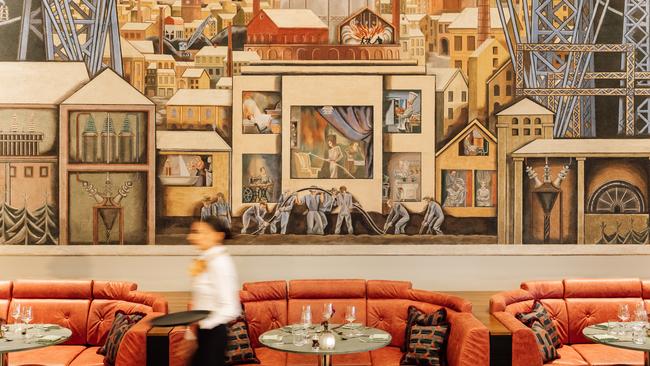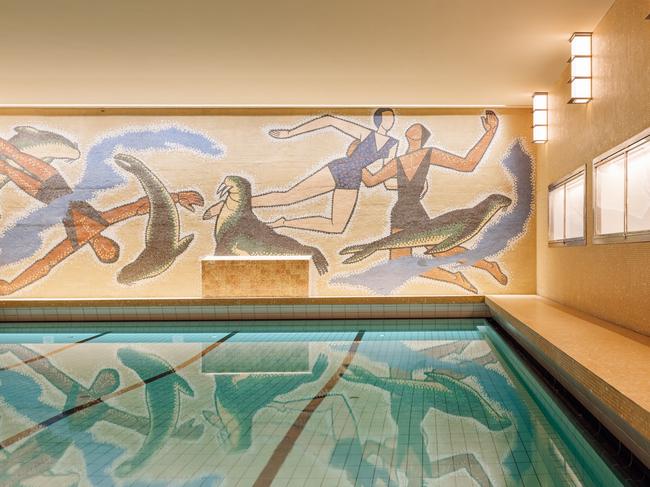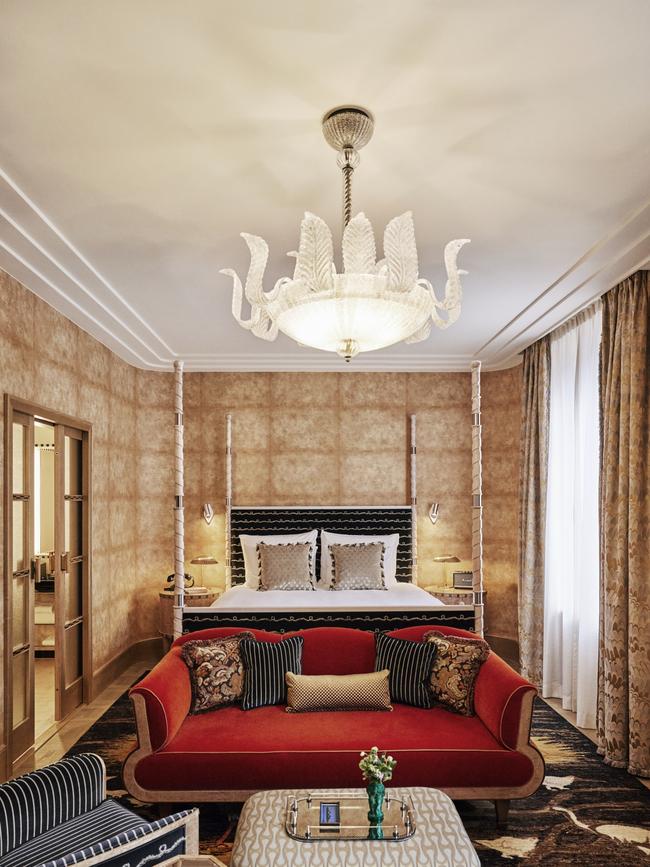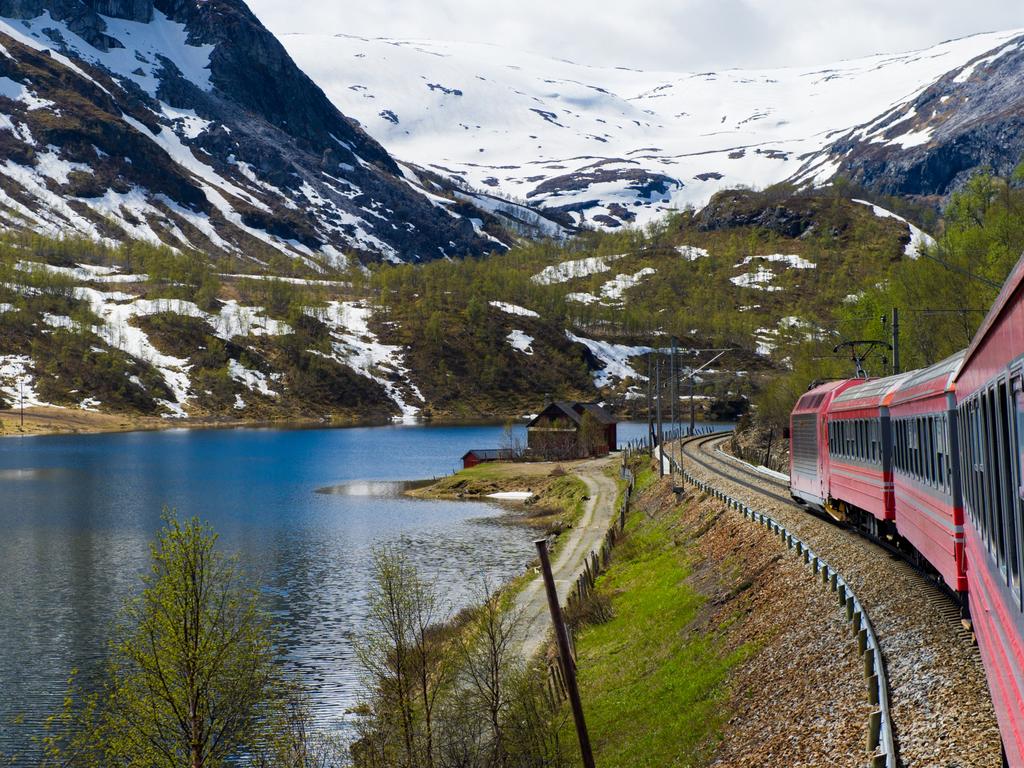Dip into this brilliant heritage hotel to find some astonishing 1930s secrets
With its labyrinthine hallways, an original Art Deco swimming pool, and an austere facade, this hotel stay is like stepping onto the set of The Great Gatsby.

Nine o’clock in the morning is an unusual time to attempt a hotel check-in. In Europe these days, hotels are strict with arrivals; it’s 3pm to check-in and don’t bother turning up early. But when we land in Oslo before 8am we can’t think of what else to do but head to our hotel in the hope someone will take pity on us.
And so by 9am we have passed through the austere Art Deco facade of Sommerro Hotel – the 1931 former Electric Company building in Oslo’s grand Frogner district – and found ourselves standing in the lobby of this most extraordinary place. And an amazing thing happens. “Welcome!” says the concierge. “Your room is ready.” We almost cry with delight, but things get even better. “And breakfast is still on,” we’re told. “Why don’t you go on through. It’s unmissable.”
We have flown in from the north of the country, where lovely days have been spent in the quietude of the Norwegian fjord lands, an area not only incredibly beautiful but still and silent. The quiet of the pine forests is matched by the stillness of the fjords; barely a ripple creases their surfaces.

So we feel entirely ready to get back into city life, and as we step into Ekspedisjonshallan, the jazz bar that doubles as Sommerro House’s breakfast room, we find it. The room, for starters, is beautiful. Overlooked by a stunning Art Deco mosaic that references the building’s electric company origins, decorated with period objets d’art and humming with an eclectic 1930s music score, we feel like we’ve stepped into a supper club. The space sings with life. Tourists and locals alike fill every table, eating pancakes and smoked salmon and dipping into a buffet that revels in its Scandi-ness (hard boiled eggs, muesli, forest berries, and more). We have stumbled on the most happening place in Oslo, before we’ve even had coffee. Who would have thought?
But in truth Sommerro House is part of a fascinating revolution occurring in Oslo: the city is quietly becoming tourist friendly. After suffering a reputation as a distant, expensive little city, less interesting than Sweden’s flashier Stockholm, the Norwegian capital is being polished into a shiny gem, a northern light in its own right. And Sommerro, we have found, is at the heart of it.
A few weeks before we visit Norway, I read my son Roald Dahl’s Boy, an account of the writer’s unusual childhood. Dahl grew up in England, but spent summers in his parents’ native Norway. One passage tells why the Dahls left the north in the first place. “Papa (and his brother Oscar) decided that a small country like Norway was no place to make a fortune,” Dahl writes. “So what they must do, they agreed, was go away to one of the big countries, like England or France, where opportunities to make good would be boundless.” Both brothers succeeded, one in France, the other in England.
This passage returns to me in Oslo. Unlike the limited place the Dahls left in the 1920s, today’s Oslo is a bustling city that oozes prosperity. The discovery in the 1960s of North Sea oil and gas has made the country enormously rich; oil profits flow into Statens pensjonsfond, a sovereign wealth fund of $US1.3 trillion.
All that glorious money is seeping back into the capital. New in recent years are two significant cultural institutions, the Munch Museum, a 13-storey love letter to The Scream painter Edvard Munch, Norway’s greatest cultural figure (with the possible exception of Alfred Nobel) and the National Museum.


Both occupy exceptional modernist buildings that blend seamlessly into Oslo’s largely neo-classical architecture. On its way, too, is a Viking museum (opening in 2026) and there’s the space-age-looking Oslo Opera House that sits on the Oslofjord foreshore.
It’s all very beautiful, neat, sophisticated. And if sometimes you feel you’d like a bit of sizzle with your big city, well, that’s where Sommerro comes in.
Like much of Oslo, Sommerro owes its restoration to the good fortune of Norway’s economy. Rescued by billionaire Petter Stordalen, the property reopened in September 2022, Norway’s largest ever cultural preservation project. It has 231 rooms, four restaurants, three bars, a cafe, a 100-seat theatre and the city’s first year-round rooftop pool, sauna and terrace.
Entering one of the rooms is like stepping onto the set of The Great Gatsby. They’re modern and luxurious, of course, but with period details that include bakelite toilet seats, cocktail trolleys, rattan room dividers and sculpted washbasins. Navigate the labyrinthine hallways to the basement to find the wellness area, one of the hotel’s most amazing assets. Here you’ll find an Art Deco pool, originally designed as Oslo’s public bath. Citizens in those poorer years were allowed to shower and bathe here, as well as swim. The change rooms have been restored and matched with spa treatment rooms and a cold (4C) pool in an incredible space.
There’s much more. A rooftop Japanese restaurant adjoins a lively bar. A Thai restaurant on the boardwalk has some of the best Thai food I’ve eaten. An adjacent 1890s Italianate villa has been incorporated into the hotel. Lavishly restored, Villa Inkognito has received an Age of Innocence restoration – another triumph.
And so we have breakfast, dive into the ancient pool, and head out to the National Museum for the day. How lucky we arrived early. They might just have trouble getting us to leave on time.
Checklist
Do: Visit the Munch Museum – of the four versions of The Scream, three are held here. A different is one shown every half an hour. Also, explore the city’s National Museum.
Arrive: Catch the train from Oslo airport to Nationaltheatret station, a two-minute walk from the hotel.
Stay: Rates start at $US199.








To join the conversation, please log in. Don't have an account? Register
Join the conversation, you are commenting as Logout